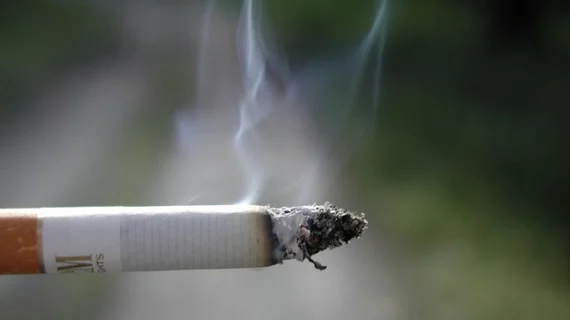Fewer than 2% of heavy smokers received lung cancer screening in 2016
Just 1.9 percent of current and former heavy smokers received lung cancer screening in 2016, according to research set to be presented at the 2018 American Society of Clinical Oncology (ASCO) Annual Meeting in Chicago.
“Lung cancer screening rates are much lower than screening rates for breast and colorectal cancers, which is unfortunate,” lead author Danh Pham, MD, of the James Graham Brown Cancer Center at the University of Louisville in Kentucky, said in a prepared statement. “It is unclear if the screening deficit is due to low provider referral or perhaps patient psychological barriers from fear of diagnosis. Lung cancer is unique in that there may be stigma associated with screening, as some smokers think that if cancer is detected, it would confirm they’ve made a bad lifestyle choice.”
Pham and colleagues studied data from the American College of Radiology’s Lung Cancer Screening Registry, comparing it to estimates of eligible smokers taken from the 2015 National Health Interview Survey.
Separating their findings into regions, the authors found that just 1 percent of eligible smokers in the West received the recommended low-dose CT screening. In addition, 1.6 percent of eligible smokers in the South, 1.9 percent of eligible smokers in the Midwest and 3.5 percent of eligible smokers in the Northeast were screened.
“This study makes a strong case that our country needs an effective public service campaign about encouraging lung cancer screening,” Bruce E. Johnson, MD, ASCO president, said in the same statement. “Public service campaigns from the 1990s encouraged women to get mammograms, saving many lives in subsequent years. We need something similar to encourage current and former heavy smokers to get screened for lung cancer.”
The 2018 ASCO Annual Meeting is scheduled to take place June 1-5 in Chicago.

